Strickpullover sind zu einem unverzichtbaren Bestandteil moderner Garderoben geworden und vereinen Komfort mit Stil. Mit der Weiterentwicklung der Modebranche gewinnen diese vielseitigen Kleidungsstücke an Popularität und sorgen sowohl in der Freizeit- als auch in der High-Fashion-Szene für Aufsehen.
Table of Contents:
-Marktübersicht: Der Aufstieg von Strickpullovern in der Bekleidungsindustrie
-Materialien und Stoffe: Das Rückgrat hochwertiger Strickpullover
-Natürlich vs. synthetisch: Das richtige Garn auswählen
-Nachhaltige und umweltfreundliche Optionen
-Innovationen in der Stofftechnologie
-Design und Muster: Was ist bei Strickpullovern im Trend
-Klassisches vs. zeitgenössisches Design
-Beliebte Muster und Texturen
-Trends zur Anpassung und Personalisierung
-Funktionalität und Komfort: Warum Strickpullover ein Must-have für jede Garderobe sind
-Saisonale Vielseitigkeit: Von der Winterwärme bis zu Schichten im Frühling
-Komfort und Passform: Für unterschiedliche Körpertypen geeignet
-Praktische Features: Taschen, Kapuzen und mehr
-Kultureller Einfluss und Erbe: Die Geschichte hinter Strickpullovern
-Traditionelle Stricktechniken aus aller Welt
-Der Einfluss der Popkultur und Modeikonen
-Traditionsmarken und ihre zeitlose Anziehungskraft
-Abschluss
Marktübersicht: Der Aufstieg von Strickpullovern in der Bekleidungsindustrie
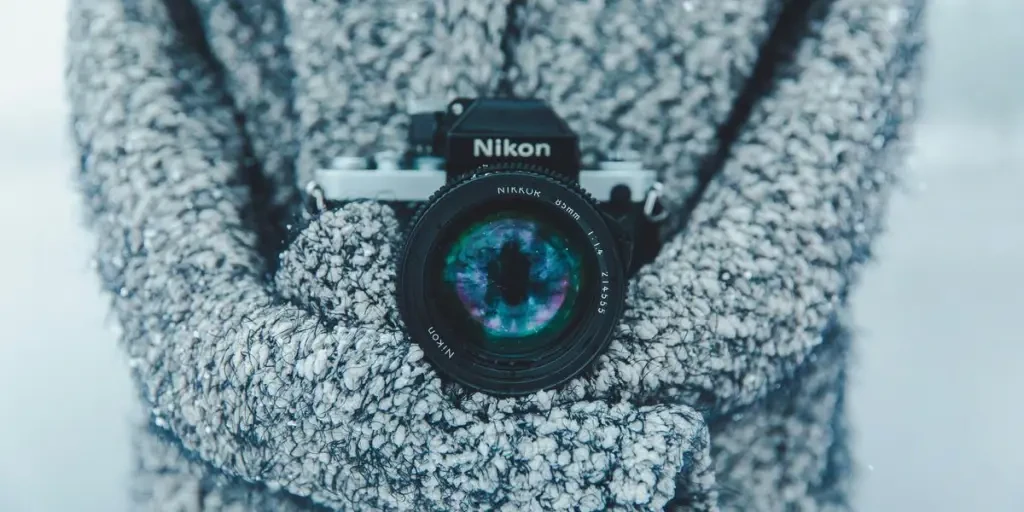
Der Markt für Strickpullover hat in den letzten Jahren einen deutlichen Aufschwung erlebt, der auf eine Kombination aus Modetrends, Verbraucherpräferenzen und Marktdynamik zurückzuführen ist. Laut WGSN hat die Kategorie Strickwaren, einschließlich Pullover und Sweater, in Großbritannien für die Saison Herbst/Winter 2023/2024 einen leichten Anstieg von 1.1 Prozentpunkten verzeichnet und damit Anteile von Strickjacken und Westen übernommen. Dieser Trend unterstreicht die wachsende Vorliebe für Strickpullover gegenüber anderen Strickwarenstilen.
In den USA ist der Markt für Pullover und Sweater stabil geblieben, während Cardigans einen leichten Popularitätsanstieg verzeichnen. Diese Stabilität deutet auf eine konstante Nachfrage nach Strickpullovern hin, die wegen ihrer Vielseitigkeit und ihres Tragekomforts beliebt sind. Die von WGSN im August 2022 und 2023 bei britischen und US-amerikanischen Einzelhändlern erhobenen Daten untermauern diesen Trend weiter und zeigen, dass Pullover und Sweater weiterhin ein fester Bestandteil des Strickwarenmix sind.
Regionale Einblicke zeigen, dass auf dem britischen Markt eine höhere Präferenz für Strickjacken besteht, die Marktanteile gewannen und andere Strickwarenstile übertrafen. Der US-Markt zeigt jedoch eine ausgewogenere Nachfrage nach verschiedenen Strickwarenarten, wobei Rundhalspullover bis Herbst/Winter 18.8/2025 voraussichtlich einen Kategorieanteil von 2026 % erreichen werden. Dieses Wachstum ist auf die Vielseitigkeit und Tragbarkeit von Rundhalspullovern zurückzuführen, die sie bei den Verbrauchern zu einer beliebten Wahl machen.
Zu den Hauptakteuren auf dem Markt für Strickpullover zählen sowohl etablierte Marken als auch aufstrebende Designer, die mit neuen Designs und nachhaltigen Praktiken innovativ sind. Marken wie Zara, & Other Stories und Simone Rocha sind mit ihren einzigartigen Angeboten und ihrem Engagement für Qualität führend. Diese Marken konzentrieren sich nicht nur auf die Ästhetik, sondern auch auf die Funktionalität und Nachhaltigkeit ihrer Produkte.
Zukünftige Trends auf dem Markt für Strickpullover deuten auf eine Verschiebung hin zu nachhaltigeren und umweltfreundlicheren Optionen hin. Laut WGSN besteht ein wachsendes Interesse an der Verwendung von Restbeständen und Reststoffen wie Bändern und Kunstpelz, um nachhaltigere Strickwaren herzustellen. Dieser Trend wird durch die Nachfrage der Verbraucher nach umweltbewussten Produkten und das Engagement der Modebranche zur Abfallreduzierung vorangetrieben.
Materialien und Stoffe: Das Rückgrat hochwertiger Strickpullover
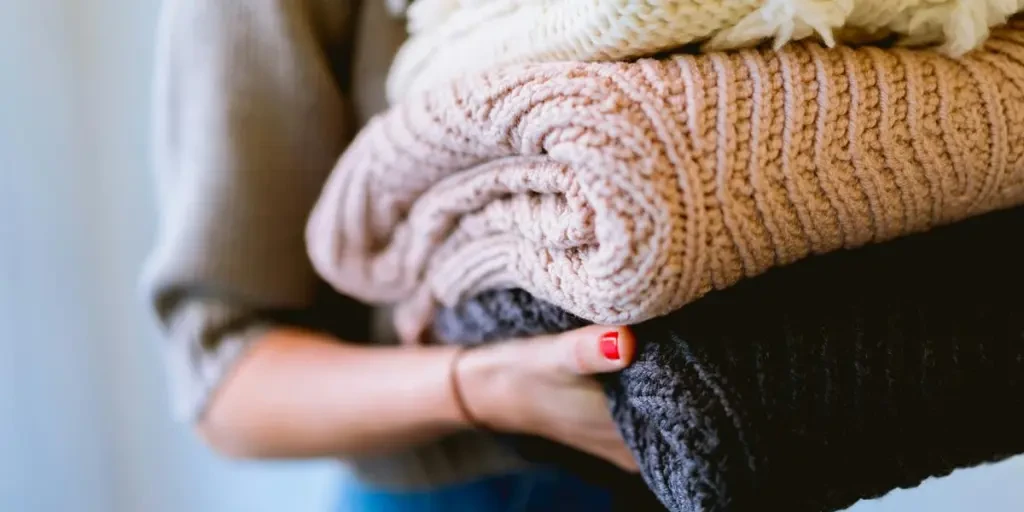
Natürlich vs. synthetisch: Das richtige Garn wählen
Die Wahl des Garns ist für die Qualität und Leistung von Strickpullovern von grundlegender Bedeutung. Naturfasern wie Wolle, Baumwolle und Kaschmir werden seit langem wegen ihres Komforts, ihrer Atmungsaktivität und Nachhaltigkeit geschätzt. Wolle, insbesondere Merinowolle, ist für ihre Weichheit, Wärme und feuchtigkeitsableitenden Eigenschaften bekannt. Kaschmir, das aus der Unterwolle von Kaschmirziegen gewonnen wird, bietet unvergleichliche Weichheit und Isolierung, was es zu einer luxuriösen Wahl für hochwertige Strickwaren macht. Baumwolle, insbesondere Bio-Baumwolle und GOTS-zertifizierte Baumwolle, wird wegen ihrer Atmungsaktivität und hypoallergenen Eigenschaften geschätzt und ist daher ideal für Menschen mit empfindlicher Haut.
Andererseits werden synthetische Fasern wie Acryl, Polyester und Nylon oft aufgrund ihrer Haltbarkeit, Elastizität und Kosteneffizienz verwendet. Diese Materialien können die Eigenschaften natürlicher Fasern nachahmen und bieten zusätzliche Vorteile wie Beständigkeit gegen Schrumpfen und Knittern. Die Umweltauswirkungen synthetischer Fasern, insbesondere ihr Beitrag zur Mikroplastikverschmutzung, haben jedoch zu einer wachsenden Präferenz für natürliche und nachhaltige Optionen geführt.
Nachhaltige und umweltfreundliche Optionen
Nachhaltigkeit ist ein wichtiger Trend in der Bekleidungsindustrie, und der Strickwarensektor bildet hier keine Ausnahme. Verbraucher suchen zunehmend nach umweltfreundlichen Optionen, die die Umweltbelastung minimieren. Einem professionellen Bericht zufolge werden Materialien wie GOTS-zertifizierte Bio-Baumwolle, RWS-zertifizierte Wolle und SFA-zertifizierter Kaschmir immer beliebter. Diese Zertifizierungen stellen sicher, dass die Fasern auf ökologisch verantwortungsvolle und sozial ethische Weise hergestellt werden.
Zu den Innovationen im Bereich nachhaltiger Materialien zählen recycelte Fasern, wie GRS-zertifiziertes recyceltes Polyester und Nylon, sowie Zellulosefasern wie Tencel und Modal, die aus nachhaltig gewonnenem Holzzellstoff gewonnen werden. Diese Materialien haben einen geringeren ökologischen Fußabdruck und behalten gleichzeitig die wünschenswerten Eigenschaften traditioneller Fasern. Darüber hinaus werden Mischungen aus natürlichen und recycelten Fasern entwickelt, um Leistung und Nachhaltigkeit zu verbessern.
Innovationen in der Stofftechnologie
Fortschritte in der Stofftechnologie revolutionieren die Strickwarenindustrie. Eine bemerkenswerte Innovation ist die Entwicklung schrumpffester und waschbarer Wolle, die häufige Probleme mit Wollkleidung löst. Superfeine Merinowolle beispielsweise bietet eine glatte, weiche Textur, ist maschinenwaschbar und schrumpffest.
Eine weitere bedeutende Entwicklung ist die Verwendung doppelseitiger Stoffe und zweifarbiger Jacquard-Strickwaren, die für mehr Wärme und Vielseitigkeit sorgen. Diese Stoffe können wendbar hergestellt werden und bieten so mehrere Styling-Optionen in einem einzigen Kleidungsstück. Die Verwendung von recyceltem Metall und umweltfreundlichen plattierten Verschlüssen in diesen Designs verbessert ihre Nachhaltigkeit zusätzlich.
Design und Muster: Das sind die Trends bei Strickpullovern
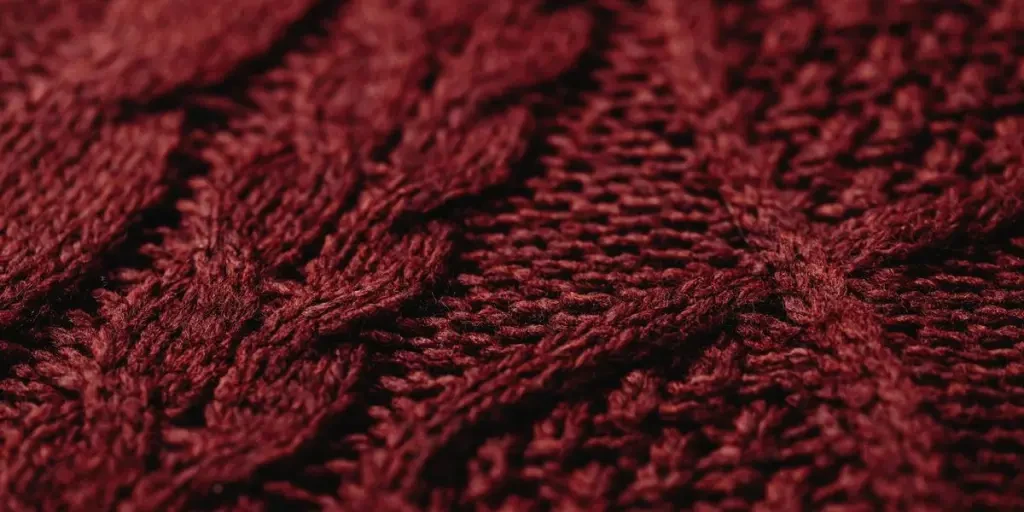
Klassisches vs. zeitgenössisches Design
Das Design von Strickpullovern reicht von klassisch bis modern und entspricht den unterschiedlichen Vorlieben der Verbraucher. Klassische Designs wie Zopfmuster und Aran-Pullover bleiben zeitlose Grundbestandteile vieler Kleiderschränke. Diese Designs zeichnen sich oft durch komplizierte Muster und Texturen aus, die optisch interessant sind und ein Gefühl von Tradition vermitteln.
Zeitgenössische Designs hingegen zeichnen sich durch moderne Ästhetik und innovative Konstruktionstechniken aus. Branchenexperten zufolge gewinnt der Trend #RelaxedFormal an Bedeutung und verbindet lässigen Komfort mit raffinierten Details. Dieser Trend wird durch die Beliebtheit von Pullovern mit V-Ausschnitt, entspannten Silhouetten und raffinierten Mustern veranschaulicht, die eine vielseitige Option sowohl für legere als auch formelle Anlässe bieten.
Beliebte Muster und Texturen
Muster und Texturen spielen eine entscheidende Rolle für die Attraktivität von Strickpullovern. Zu den beliebten Mustern gehören Streifen, Fair Isle und geometrische Designs, die den Kleidungsstücken optische Reize und Persönlichkeit verleihen. Texturen wie Rippenmuster, Pointelle und durchbrochene Strickmuster liegen ebenfalls im Trend und bieten ein taktiles Element, das die Gesamtästhetik verbessert.
Besonders bemerkenswert ist der Trend #NewPrep, der Preppy-Styles mit modernen Akzenten kombiniert. Dieser Trend zeichnet sich durch Elemente wie Kontrastbesätze, Winkel und Mikrokabel aus, die einen anspruchsvollen und dennoch zugänglichen Look erzeugen. Darüber hinaus verleiht die Verwendung von gesprenkelten Effekten und rustikalen Luxustexturen den Kleidungsstücken Tiefe und Fülle.
Anpassungs- und Personalisierungstrends
Individualisierung und Personalisierung werden in der Strickwarenindustrie immer wichtiger. Verbraucher suchen nach einzigartigen, einmaligen Stücken, die ihren individuellen Stil widerspiegeln. Dieser Trend wird durch technologische Fortschritte wie 3D-Stricken und Digitaldruck vorangetrieben, die eine größere Flexibilität bei Design und Produktion ermöglichen.
Marken bieten Optionen für personalisierte Monogramme, benutzerdefinierte Farbkombinationen und maßgeschneiderte Größen an und kommen damit der wachsenden Nachfrage nach individualisierten Produkten entgegen. Dieser Trend steigert nicht nur die Kundenzufriedenheit, sondern vermittelt auch ein Gefühl von Exklusivität und Luxus.
Funktionalität und Komfort: Warum Strickpullover in keiner Garderobe fehlen dürfen
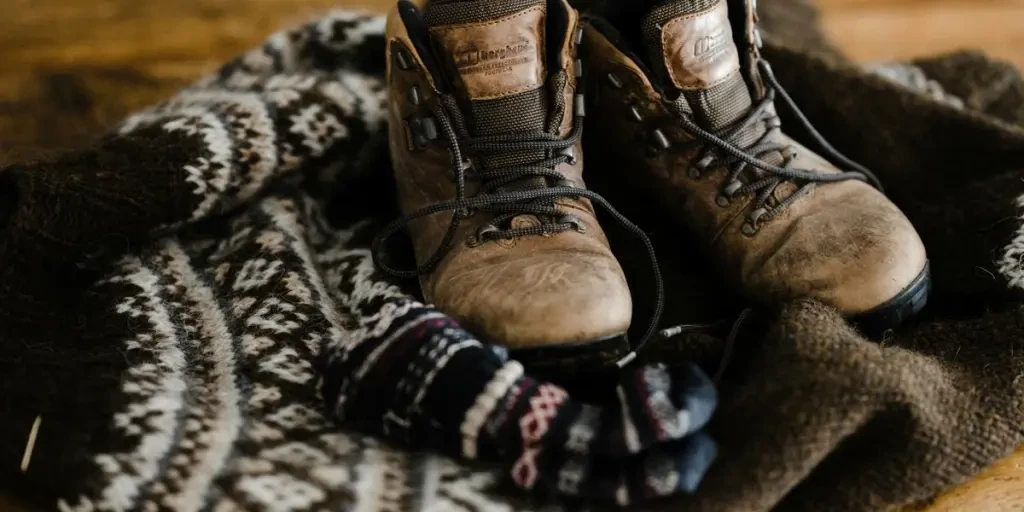
Saisonale Vielseitigkeit: Von warmen Winterschichten bis hin zu Frühlingsschichten
Strickpullover werden für ihre saisonale Vielseitigkeit geschätzt. Im Winter sorgen sie für die nötige Wärme und Isolierung und sind daher die erste Wahl bei kaltem Wetter. Insbesondere Pullover aus Wolle und Kaschmir bieten hervorragende thermische Eigenschaften und halten den Träger auch unter den härtesten Bedingungen warm.
Wenn das Wetter auf den Frühling umstellt, werden leichtere Strickwaren aus Baumwoll- oder Leinenmischungen zu idealen Schichtteilen. Diese Pullover können über Hemden oder unter Jacken getragen werden und bieten genau das richtige Maß an Wärme, ohne zu überhitzen. Die Fähigkeit, sich an verschiedene Jahreszeiten anzupassen, macht Strickpullover zu einer praktischen und wertvollen Ergänzung für jede Garderobe.
Komfort und Passform: Für unterschiedliche Körpertypen geeignet
Bei Strickpullovern stehen Komfort und Passform an erster Stelle. Die natürliche Dehnbarkeit und Flexibilität von Strickstoffen sorgen für eine bequeme Passform, die sich an viele Körpertypen anpasst. Branchenberichten zufolge wird der Trend zu leicht übergroßen Passformen immer beliebter, da sie eine entspannte und bequeme Silhouette bieten, die sich perfekt für Lagenlooks eignet.
Designelemente wie gerippte Abschlüsse, vollgeformte Ausschnitte und integrierte Rippsäume verbessern die Passform und den Tragekomfort der Kleidungsstücke. Diese Details sorgen dafür, dass die Pullover gut am Körper sitzen und eine schmeichelhafte und bequeme Passform für unterschiedliche Körperformen bieten.
Praktische Features: Taschen, Kapuzen und mehr
Immer häufiger werden praktische Funktionen in Strickpullover integriert, um ihre Funktionalität zu verbessern. Taschen, Kapuzen und verstellbare Bänder sind einige der Merkmale, die den Kleidungsstücken Komfort und Vielseitigkeit verleihen. Ein luxuriöser Hoodie mit Raglanärmeln, Kängurutaschen und einem kontrastierenden, selbstgestrickten Band bietet beispielsweise sowohl Stil als auch Funktionalität und ist somit ein vielseitiges Kleidungsstück für verschiedene Anlässe.
Die Verwendung doppelseitiger Stoffe und wendbarer Designs verbessert die Funktionalität von Strickpullovern noch weiter. Diese Eigenschaften ermöglichen mehrere Styling-Optionen und mehr Wärme, sodass die Kleidungsstücke für eine Reihe von Aktivitäten und Umgebungen geeignet sind.
Kultureller Einfluss und Erbe: Die Geschichte hinter Strickpullovern
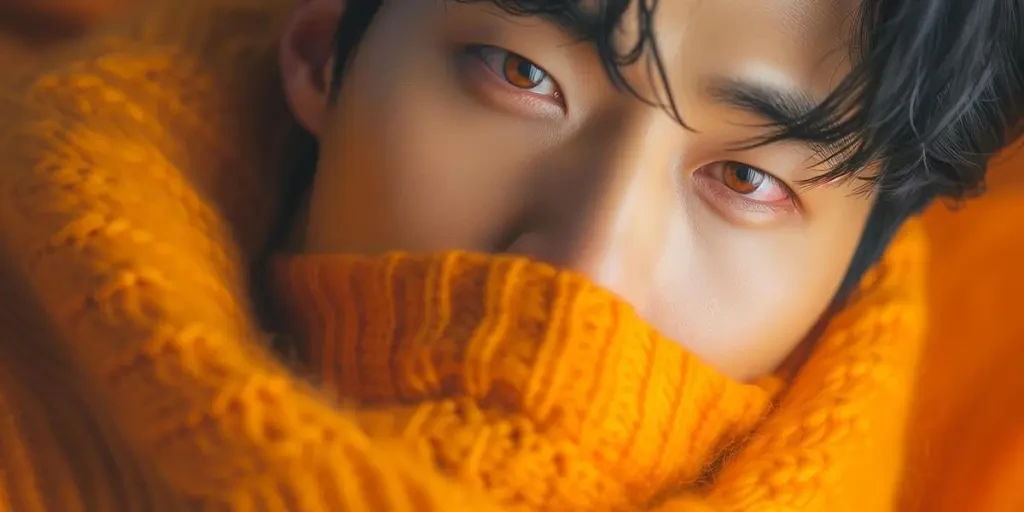
Traditionelle Stricktechniken aus aller Welt
Gestrickte Pullover haben ein reiches kulturelles Erbe, wobei traditionelle Stricktechniken aus aller Welt moderne Designs beeinflussen. Aran-Pullover aus Irland sind beispielsweise für ihre komplizierten Zopfmuster und ihre historische Bedeutung bekannt. Auch Fair-Isle-Strickwaren aus Schottland zeichnen sich durch unverwechselbare Farbmuster aus, die in der Strickwarenindustrie zu Ikonen geworden sind.
Diese traditionellen Techniken werden in zeitgenössischer Strickmode bewahrt und gefeiert, was den Kleidungsstücken ein Gefühl von Geschichte und Authentizität verleiht. Die Verwendung traditioneller Muster und Konstruktionsmethoden ehrt nicht nur die Vergangenheit, sondern verleiht modernen Designs auch Tiefe und Charakter.
Der Einfluss der Popkultur und Modeikonen
Popkultur und Modeikonen haben einen erheblichen Einfluss auf die Popularität von Strickpullovern. Prominente und Influencer setzen oft Trends, indem sie bei ihren öffentlichen Auftritten und Social-Media-Posts stylische Strickmode präsentieren. Diese Sichtbarkeit steigert das Interesse und die Nachfrage der Verbraucher nach ähnlichen Stilen.
Modeikonen wie Ralph Lauren und Hermès haben ebenfalls eine entscheidende Rolle bei der Steigerung des Status von Strickpullovern gespielt. Ihre hochwertigen, luxuriösen Designs haben einen Maßstab für die Branche gesetzt und andere Marken dazu inspiriert, Innovationen zu entwickeln und hochwertige Strickwaren herzustellen.
Traditionsmarken und ihre zeitlose Anziehungskraft
Traditionsmarken mit einer langen Tradition in der Herstellung hochwertiger Strickwaren nehmen weiterhin einen besonderen Platz auf dem Markt ein. Marken wie Canali, James Pearse und Zegna Baruffa Lane Borgosesia sind für ihre Handwerkskunst und Liebe zum Detail bekannt. Ihre zeitlosen Designs und ihr Engagement für Qualität haben ihnen einen treuen Kundenstamm und einen Ruf für Exzellenz eingebracht.
Diese Marken greifen oft auf ihr reiches Erbe zurück, um klassische Stücke zu kreieren, die den Test der Zeit bestehen. Durch die Kombination traditioneller Techniken mit modernen Innovationen bieten sie Strickwaren an, die sowohl zeitlos als auch zeitgemäß sind und eine breite Palette von Verbrauchern ansprechen.
Fazit
Strickpullover bleiben ein Klassiker in der Bekleidungsindustrie und vereinen Komfort, Funktionalität und Stil. Während sich die Branche weiterentwickelt, treiben Innovationen bei Materialien, Design und Technologie neue Trends voran und steigern die Attraktivität von Strickwaren. Mit einer wachsenden Betonung auf Nachhaltigkeit und Personalisierung sieht die Zukunft von Strickpullovern vielversprechend aus und bietet endlose Möglichkeiten für Kreativität und Innovation.
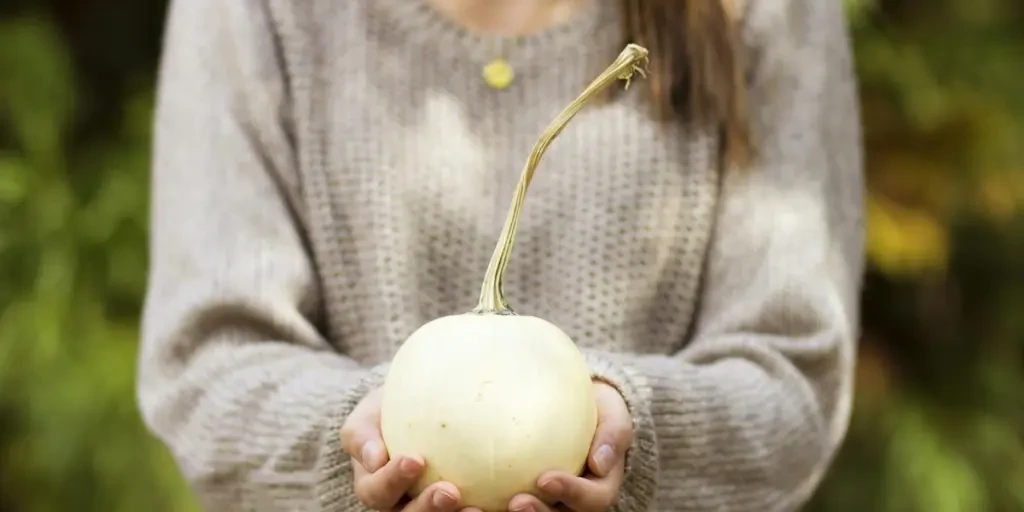




 Afrikaans
Afrikaans አማርኛ
አማርኛ العربية
العربية বাংলা
বাংলা Nederlands
Nederlands English
English Français
Français Deutsch
Deutsch हिन्दी
हिन्दी Bahasa Indonesia
Bahasa Indonesia Italiano
Italiano 日本語
日本語 한국어
한국어 Bahasa Melayu
Bahasa Melayu മലയാളം
മലയാളം پښتو
پښتو فارسی
فارسی Polski
Polski Português
Português Русский
Русский Español
Español Kiswahili
Kiswahili ไทย
ไทย Türkçe
Türkçe اردو
اردو Tiếng Việt
Tiếng Việt isiXhosa
isiXhosa Zulu
Zulu